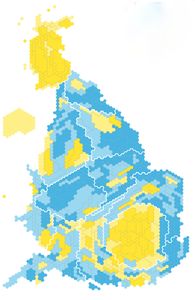The amazing thing about modern science is how it is capable of continuing to astound us with discovery. Consider the dodo, a bird we have thought to be extinct since the 1660s. As a recent Atlantic article reported, new science has made some interesting discoveries about the dodo. (Emily Anthes, “The Smart, Agile, and Completely Underrated Dodo,” The Atlantic, June 8, 2016).
The dodo developed on the island of Mauritius, and although perhaps vaguely related to the pigeon, unlike the pigeon, which traveled the world and adapted to the changed circumstances, the dodo stayed where it was, isolated from the world, stayed just the way it was, and a lack of adaptive development contributed to its extinction. The new research is upsetting some old stories about the dodo. First, examination of skeletal remains suggests that the old stereotype of dodos as fat, lumbering, rather clumsy birds now seems wrong. It seems that in fact they had great strength and agility and some finely tuned abilities that allowed them to weather great challenges, far outlasting some other species that were born in their same evolutionary cohort.
And it looks like they were not hunted to death. The belief that the Europeans who settled on Mauritius drove them to extinction by eating them for dinner appears to be misguided. The Europeans — in this case the Dutch — seem not to have included dodos in their diet, or not much anyway. It might have been the other beasts they brought with them that were the threat to the unadapted dodos.
The Atlantic article did not mention another finding that just seems to be emerging now. There is some evidence that the dodo did travel elsewhere, creating a subspecies that has survived. As often happens with evolution, it is not always possible to recognize genetic cousins, and requires special circumstances or a new method of observation to recognize the link.
And here it is, discovered last night by the Guardian, one of the major national British newspapers:
It’s a remarkable find, if you think about it. There it is, a basically blue bird, some say, from eating and rolling in woad, a behavior that might have been learned from neighboring species. It has a bright yellow head, little wings, behind, and perhaps belly. It is difficult to tell, because this one is sitting down facing away from the rest of the world.
This is a still life, so we do not fully know its future. It looks a little sad. Some observers see a threatening crack at the neck and wonder whether we see in this picture the possibility that it will fall off the body, as tenuous as that connection is looking.
This bird looks very vulnerable, somewhat isolated and sulky. I wonder whether it can turn around and become adaptive enough to thrive?
http://bit.ly/28RJsYb @VSapiro

